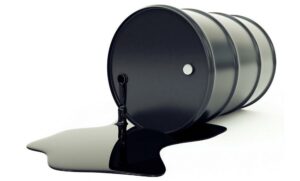By the end of Monday, the Dow Jones Index (US30) had risen by 0.25%. The S&P 500 (US500) gained 0.21%, and the Nasdaq (US100) Technology Index closed up 0.46%. Wall Street started the week with gains on Monday as investors positioned themselves ahead of a data-heavy week, which includes two key inflation reports that are likely to influence the Federal Reserve’s policy expectations. A weak August jobs report, combined with softer labor market data last week, fueled hopes that the Fed will cut rates at its September meeting, with traders increasingly pricing in the possibility of a more significant 50 basis point (bps) rate cut. This week, investors will monitor the PPI and CPI for new signals on the economy’s direction.
Stock markets in Europe were mostly up on Monday. Germany’s DAX (DE40) rose by 0.89%, France’s CAC 40 (FR40) closed up 0.78%, Spain’s IBEX35 (ES35) gained 1.02%, and the UK’s FTSE 100 (UK100) closed up 0.14%. European stocks closed with solid gains, as markets continued to assess the outlook for European rates and the latest corporate news. Banks closed sharply higher as Eurozone yield spreads narrowed, easing fragmentation concerns that had emerged in recent weeks before the expected dissolution of the French parliament. Prime Minister François Bayrou is expected to lose a confidence vote as the government rejects the current budget proposal, creating political risk and likely increasing the country’s budget deficit.
WTI crude oil prices rose 2% on Monday, climbing above the $63 per barrel mark and recovering from a three-day slide. The gains came as OPEC+ announced a smaller-than-expected production increase and concerns over potential new US sanctions on Russian oil intensified. The group agreed to raise production by 137,000 barrels per day from October, which is far below the increases of 555,000 bpd in August and September and 411,000 bpd in June and July. Analysts noted that some members are already overproducing, meaning the real impact on the market may be limited.
Silver prices (XAG/USD) climbed back above the $41 per ounce mark, reaching their highest level since August 2011, as signs of a cooling US labor market boosted expectations for a Federal Reserve rate cut this year. Markets are fully pricing in a 25 bps rate cut later this month, with some betting on a more significant half-point shift. On the industrial side, strong demand from solar panels, electric vehicles, and electronics has tightened the physical silver market amid limited supply.
Asian markets were mostly down yesterday. Japan’s Nikkei 225 (JP225) rose by 1.45%, China’s FTSE China A50 (CHA50) fell by 0.10%, Hong Kong’s Hang Seng (HK50) gained 0.85%, and Australia’s ASX 200 (AU200) ended the day with a 0.24% loss. In early Tuesday trading, Hong Kong stocks jumped 1.4%, rising for the third consecutive day to their highest level since October 2021, as all sectors saw gains. Optimism on Wall Street on Monday lifted the mood ahead of an expected Fed rate cut later this month. Hong Kong real estate company stocks were among the top gainers, rising by about 2% after the city of Shenzhen eased home purchase restrictions last week. Technology, financial, and consumer stocks also rose, supported by a third consecutive day of gains in mainland markets as Beijing moves toward a record trade surplus despite August exports hitting a six-month low. However, gains were capped by caution ahead of the release of China’s CPI and PPI data on Wednesday, as concerns about deflation persist.
The Westpac-Melbourne Institute Index of Consumer Sentiment in Australia fell by 3.1% month-over-month to 95.4 in September 2025, offsetting the 5.7% increase in August. This decline reflects renewed anxiety about the interest rate outlook, despite some easing of the cost-of-living crisis and support from monetary policy easing. Assessments of the economy worsened, with the 12-month outlook falling 8.9% to 92.2 and the 5-year outlook declining 5.9% to 92.7. The Head of Australian Macro Expectations said the survey shows that the recovery in consumer demand since mid-2024 remains sluggish and further policy easing will likely be needed. He expects the RBA to cut rates by 25 basis points in November and two more times in 2026.









